India to launch female robot astronaut 'Vyommitra' ahead of manned mission (IndiaTV News)
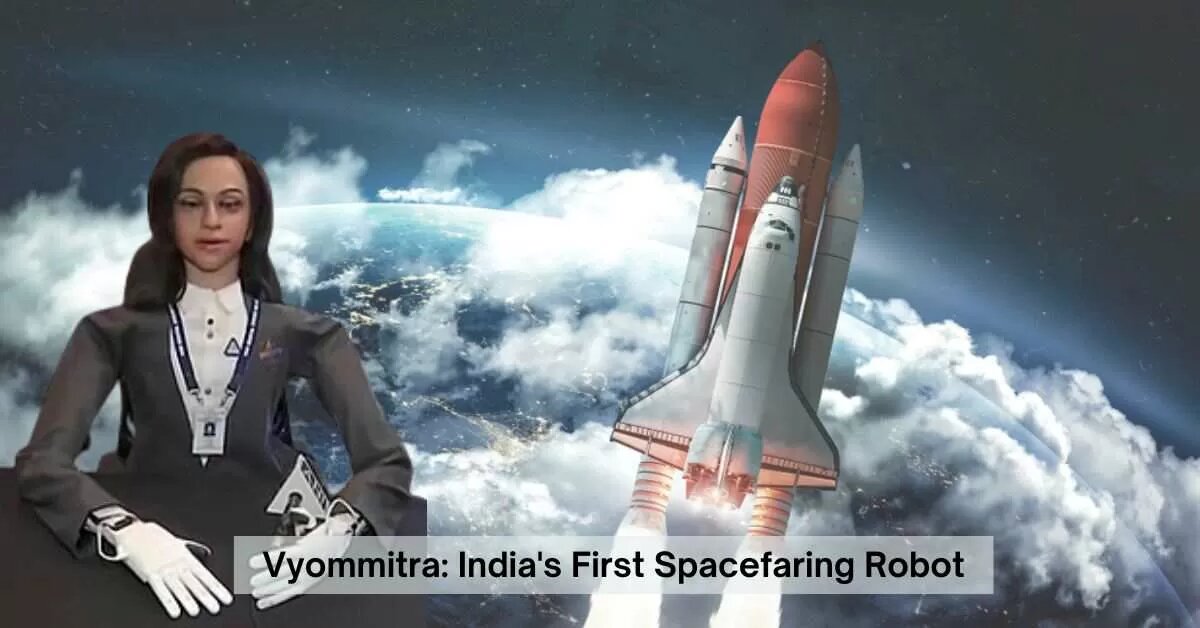
- 14 Dec 2023
Why is it in the News?
The Minister of Science & Technology, Dr Jitendra Singh, announced on Wednesday that India is set to launch Vyommitra, a female robot astronaut, into space as part of the ambitious Gaganyaan project.
What is Vyommitra?
- Vyommitra is an AI-enabled female robot.
- It was introduced at the inaugural session of the "Human Spaceflight and Exploration — Present Challenges and Future Trends" event in January 2020.
- The name is a combination of two Sanskrit words: Vyoma (Space) and Mitra (Friend), and it was created for the unmanned Gaganyaan mission.
- Because she lacks legs, she is described as a half-humanoid robot.
- She may, however, bend to the sides and forward.
- The ISRO Inertial Systems Unit (IISU) designed, developed, and integrated the robot.
- At the same time, Vikram Sarabhai Space Centre (VSSC), a sister Isro facility based in Thumba, built its fingers.
- This robot is designed to ride aboard a rocket and survive stress and vibrations while in flight.
- With the ability to speak, see, and make facial expressions, it has been created to resemble a human.
- Vyommitra will also acquire a digital twin.
- The twin would be built through collaboration with academic institutions such as the IITs.
- Vyommitra will accompany astronauts on manned missions in addition to the unmanned Gaganyaan mission.
- Vyommitra's mission is to perform specific tasks in order to analyse how astronauts might behave.
- She will mimic every action that astronauts are required to take and respond to them in two languages.
- She will monitor via module parameters, alert, carry out life support procedures, carry out tasks like operating switch panels, and imitate other human actions in space throughout the uncrewed flight.
What is the Gaganyaan mission?
- Named after the Sanskrit word for craft or vehicle to the sky, the Gaganyaan project has been developed at the cost of ?90 billion.
- If it succeeds, India will become only the fourth country to send a human into space after the Soviet Union, the US, and China.
- Under the Gaganyaan Mission, ISRO will be sending three humans to an orbit of 400 km for a 3-day mission and bring them back safely to Earth.
- Launch Vehicle: GSLV Mk III, also called the LVM-3 (Launch Vehicle Mark-3,) the three-stage heavy lift launch vehicle, will be used to launch Gaganyaan as it has the necessary payload capability.
- Training Collaboration with Russia: In June 2019, ISRO's Human Space Flight Centre partnered with Russia's Glavkosmos, a government-owned entity, under a contract encompassing comprehensive astronaut training.
- However, four astronauts selected for the Gaganyaan have been undergoing mission-specific training at the Astronaut Training Facility in Bengaluru.
How Google DeepMind’s AI breakthrough could revolutionise chip, and battery development (India Today)
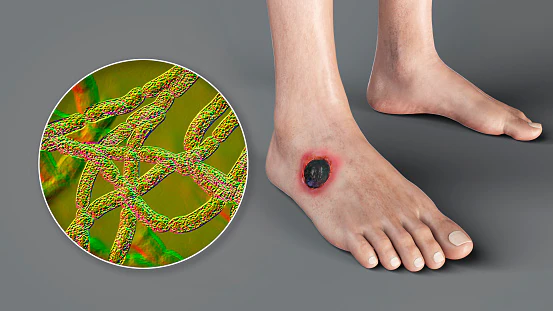
- 14 Dec 2023
Why is it in the News?
The World Health Organisation (WHO) has reported a significant anthrax outbreak in Zambia, marking an alarming spread of the disease across nine out of the country's ten provinces.
What is anthrax?
- According to Centres for Disease Control and Prevention (CDC), anthrax is a highly infectious disease that is caused by the gram-positive, rod-shaped bacteria known as Bacillus anthracis.
- Although it affects animals like cows, sheep, and goats, humans can get sick if they come in contact with infected animals or contaminated animal products.
- Anthrax is not contagious, which means we can't catch it from another person like the cold or flu.
Symptoms of anthrax:
- The disease manifests in three forms depending on the route of infection: cutaneous, gastrointestinal, and inhalational.
- Cutaneous anthrax, the most common form, presents with itchy bumps that develop into black sores, often accompanied by fever and muscle aches.
- Gastrointestinal anthrax resembles food poisoning initially but can escalate to severe abdominal pain and bloody diarrhoea.
- Inhalational anthrax, the deadliest form, starts with cold-like symptoms before progressing to severe respiratory distress and shock.
How is anthrax diagnosed?
- Anthrax can be diagnosed by identifying Bacillus anthracis in blood, skin lesions, or respiratory secretions through laboratory culture, PCR, or ELISA tests.
- While there is no specific test to determine exposure to anthrax, public health investigations play a crucial role in identifying potential cases.
Treatment for anthrax:
- Treatment for anthrax is available and includes antibiotics such as ciprofloxacin, doxycycline, or levofloxacin.
- If diagnosed early, antibiotic treatment can cure most anthrax infections.
- In severe cases, hospitalisation and treatments like continuous fluid drainage and mechanical ventilation may be necessary.
- Vaccines are also available for both livestock and humans, although human vaccines are typically reserved for those at high occupational risk.
How Google DeepMind’s AI breakthrough could revolutionise chip, and battery development (The Hindu)
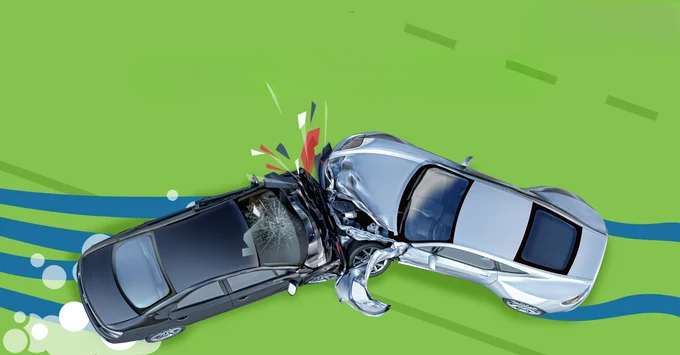
- 14 Dec 2023
Why is it in the News?
Road traffic deaths fell by 5% to 1.19 million fatalities annually worldwide between 2010 and 2021, with 108 UN member nations reporting a drop, a report by the World Health Organization (WHO) said. India, however, registered a 15% increase in fatalities.
News Summary:
- The fifth edition of the WHO Global Status Report on Road Safety, released in 2023, serves as a comprehensive assessment of progress in mitigating road traffic deaths.
- This report evaluates advancements made between 2010 and 2021, establishing a foundation for meeting the ambitious target of the United Nations Decade of Action 2021–2030—to cut road traffic fatalities in half by 2030.
- Declared by the United Nations General Assembly in September 2020, the Decade of Action for Road Safety 2021-2030 strives to achieve a 50% reduction in road traffic deaths and injuries by 2030.
- Generous support from Bloomberg Philanthropies has played a crucial role in producing this report.
- Since 2007, Bloomberg Philanthropies has committed $500 million to facilitate road safety initiatives in low- and middle-income countries and cities worldwide
Key Insights from the Global Status Report on Road Safety 2023:
- Countries Achieving Over 50% Reduction in Road Traffic Deaths: Ten countries, including Belarus, Brunei Darussalam, Denmark, Japan, Lithuania, Norway, Russian Federation, Trinidad and Tobago, the United Arab Emirates, and Venezuela, have successfully reduced road traffic deaths by more than 50%.
- Additionally, 35 more countries have made commendable progress, achieving a reduction in road traffic deaths ranging from 30% to 50%.
- Leading Cause of Death for Children and Youth: As of 2019, road traffic crashes have become the primary cause of death for children and youth aged five to 29 years.
- Globally, these crashes rank as the 12th leading cause of death across all age groups.
- 5% Reduction in Road Traffic Fatalities in the Last Decade: Despite a population growth of nearly 14 billion over the last decade, there has been a 5% reduction in the absolute number of road traffic fatalities.
- The road fatality rate has declined from 18 per 1 lakh people in 2010 to 15 per 1 lakh in 2021, marking a 16% decrease in the road traffic death rate since 2010.
- Regional Distribution of Traffic Deaths: The regional breakdown indicates that:
- 28% of global road traffic deaths occurred in the WHO’s South-East Asia Region
- 25% in the Western Pacific Region
- 19% in the African Region
- 12% in the Region of the Americas
- 11% in the Eastern Mediterranean Region, and
- 5% in the European Region.
- The situation in Low- and Middle-Income Countries: Nine out of 10 road traffic deaths transpire in low- and middle-income countries, with fatalities in these nations being disproportionately higher (three times) in comparison to the number of vehicles and roads they possess.
- Countries Meeting WHO Best Practices for Risk Factors: Only six countries have legislation aligning with WHO best practices for all risk factors (speeding, drunk driving, and the use of motorcycle helmets, seatbelts, and child restraints).
- Meanwhile, 140 countries, constituting two-thirds of UN Member States, have such laws governing at least one of these risk factors.
- India-Specific Observation: In India, the reported deaths due to road crashes increased from 1,50,785 in 2018 to 1,53,792 in 2021.
- Notably, the number stood at 1.3 lakh in 2010.
Here to enhance partnership between EFTA, India: Norway's trade minister (Business Standard)
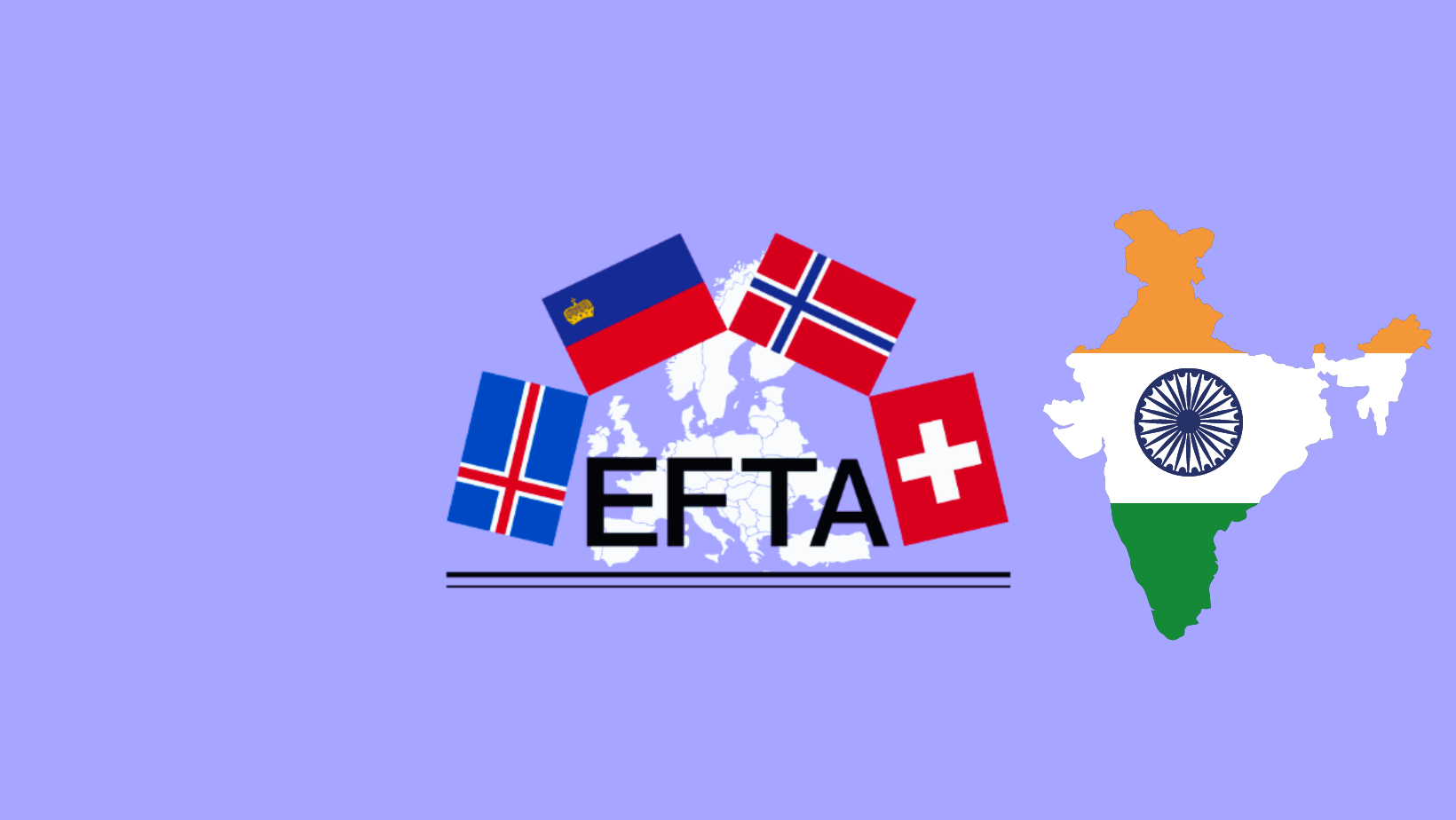
- 14 Dec 2023
Why is it in the News?
Norway's Minister of Trade and Industry Jan Christian Vestre has said his India visit aims to enhance collaboration between European free trade partners and India and improve framework conditions for job creation, value creation, and investments.
About the European Free Trade Association (EFTA):
- The European Free Trade Association (EFTA) is an intergovernmental organization established in 1960 by the Stockholm Convention.
- Its core objective is to foster free trade and economic integration among its member countries, both within Europe and on a global scale.
- Member Countries: EFTA comprises four member countries: Iceland, Liechtenstein, Norway, and Switzerland.
- These nations are characterized by open, competitive economies, demonstrating a shared commitment to progressively liberalize trade both within multinational forums and through individual free trade agreements.
- Customs Distinction: Unlike the European Union (EU), EFTA operates differently as it is not a customs union.
- This key distinction allows each EFTA State the autonomy to establish its own customs tariffs and formulate foreign trade measures independently concerning non-EFTA States.
- Association Responsibilities:
- EFTA manages various aspects crucial to its objectives, including:
- Facilitating free trade among EFTA countries.
- Overseeing EFTA's engagement in the European Economic Area (EEA), encompassing the European Union and three EFTA countries (Iceland, Liechtenstein, and Norway, excluding Switzerland).
- Managing EFTA's extensive network of free trade agreements globally.
- Free Trade Agreement Network: EFTA member countries boast one of the largest networks of Free Trade Agreements (FTAs) globally.
- This comprehensive network spans over 60 countries and territories, incorporating the European Union among others.
EFTA plays a pivotal role in promoting economic collaboration, free trade, and global engagement, distinguishing itself from the EU through its approach to customs and foreign trade measures.
What is a Free Trade Agreement?
- A Free Trade Agreement (FTA) is an agreement between two or more nations aimed at lowering barriers to imports and exports among them.
- In a free trade scenario, goods and services can move across international borders with minimal government tariffs, quotas, subsidies, or restrictions hindering their exchange.
- The principle of free trade stands in contrast to trade protectionism or economic isolationism.
- FTAs come in various forms, including Preferential Trade Agreements, Comprehensive Economic Cooperation Agreements, and Comprehensive Economic Partnership Agreements (CEPA).
COP28: What was the most important deal short (Indian Express)
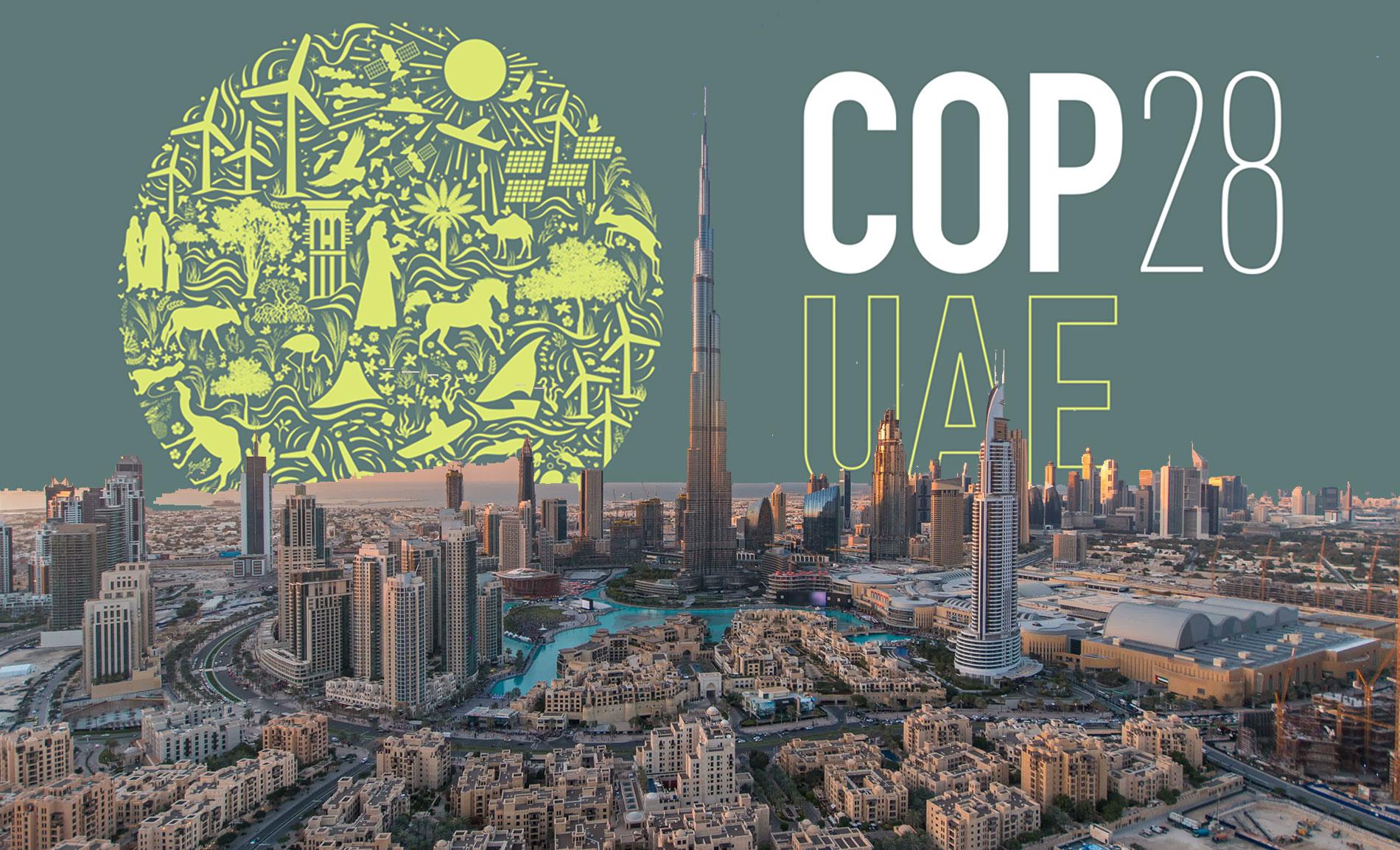
- 14 Dec 2023
Why is it in the News?
COP28: The annual climate conference this year saw some key resolutions on fossil fuels, methane emissions, and funds to fight global warming, among others. However, many concerns remain.
Context:
- The 2023 United Nations Climate Change Conference, also referred to as COP28 took place from November 30 to December 12 at Expo City in Dubai, United Arab Emirates.
- While the event yielded significant outcomes, it, akin to its predecessors, fell short of meeting the anticipated expectations.
Key Outcomes of COP28:
- Fossil Fuel Transition Ambiguity: Acknowledging the role of fossil fuels in global warming for the first time, the agreement calls for countries to contribute to transitioning away from fossil fuels to achieve net-zero emissions by 2050.
- However, the lack of specific time schedules and targets disappointed some nations that expected a more explicit commitment to a "fossil fuel phase-out."
- Renewable Energy Tripling: The agreement calls on countries to contribute to tripling the global installed capacity of renewable energy and doubling annual improvements in energy efficiency.
- This measure is expected to result in emissions avoidance of approximately 7 billion tonnes of carbon dioxide equivalent by 2030.
- However, the global nature of this target raises questions about individual country responsibilities.
- Coal Phase-Down Continuation: The agreement reiterates the commitment to the phase-down of coal, following up on the decision made at COP26.
- While there were considerations to impose restrictions on new coal-fired power plants without carbon capture and storage, these were dropped due to resistance from countries like India, China, and South Africa.
- The agreement lacks specifics on measurement criteria or baseline for this phase-down.
- Methane Emission Challenges: Despite the significance of methane as a greenhouse gas, responsible for nearly 25% of emissions and is 80 times more potent than CO2, the agreement avoids setting targets for methane emission cuts in 2030.
- Countries like India are opposed to mandates due to the agricultural sector's major role in methane emissions.
- Operational Loss & Damage Fund: A significant outcome for vulnerable nations, COP28 operationalized the Loss and Damage Fund, established in COP27.
- Commitments, totaling around US$ 800 million, were made during the conference to assist countries recovering from climate-induced disasters.
- Global Goal on Adaptation Establishment: COP28 adopted a global framework for adaptation, addressing a historic imbalance where adaptation efforts received less attention and resources compared to mitigation activities.
- The framework, though established, lacks financial provisions, necessitating further strengthening in subsequent years.
- Adaptation Challenges: While the global adaptation framework is a positive step, there is still work to be done, particularly in defining indicators for measuring progress on each global goal.
- Adaptation efforts historically focused on local initiatives, and the agreement aims to garner more attention and resources for these endeavours on a global scale.
- Climate Action Acceleration Shortcomings: The final agreement falls short of providing sufficient impetus for the acceleration of climate action in the immediate term.
What is the Conference of the Parties (COP)?
- In 1992, Rio Earth Summit, 154 countries joined an international treaty, the United Nations Framework Convention on Climate Change, as a framework for international cooperation to combat climate change by limiting average global temperature increases and the resulting climate change, and coping with impacts that were, by then, inevitable.
- The COP is the supreme decision-making body of the Convention.
- All States that are Parties to the Convention are represented at the COP, at which they review the implementation of the Convention and any other legal instruments that the COP adopts and take decisions necessary to promote the effective implementation of the Convention, including institutional and administrative arrangements.
- Currently, there are 198 'parties' or signatories of the Convention.
